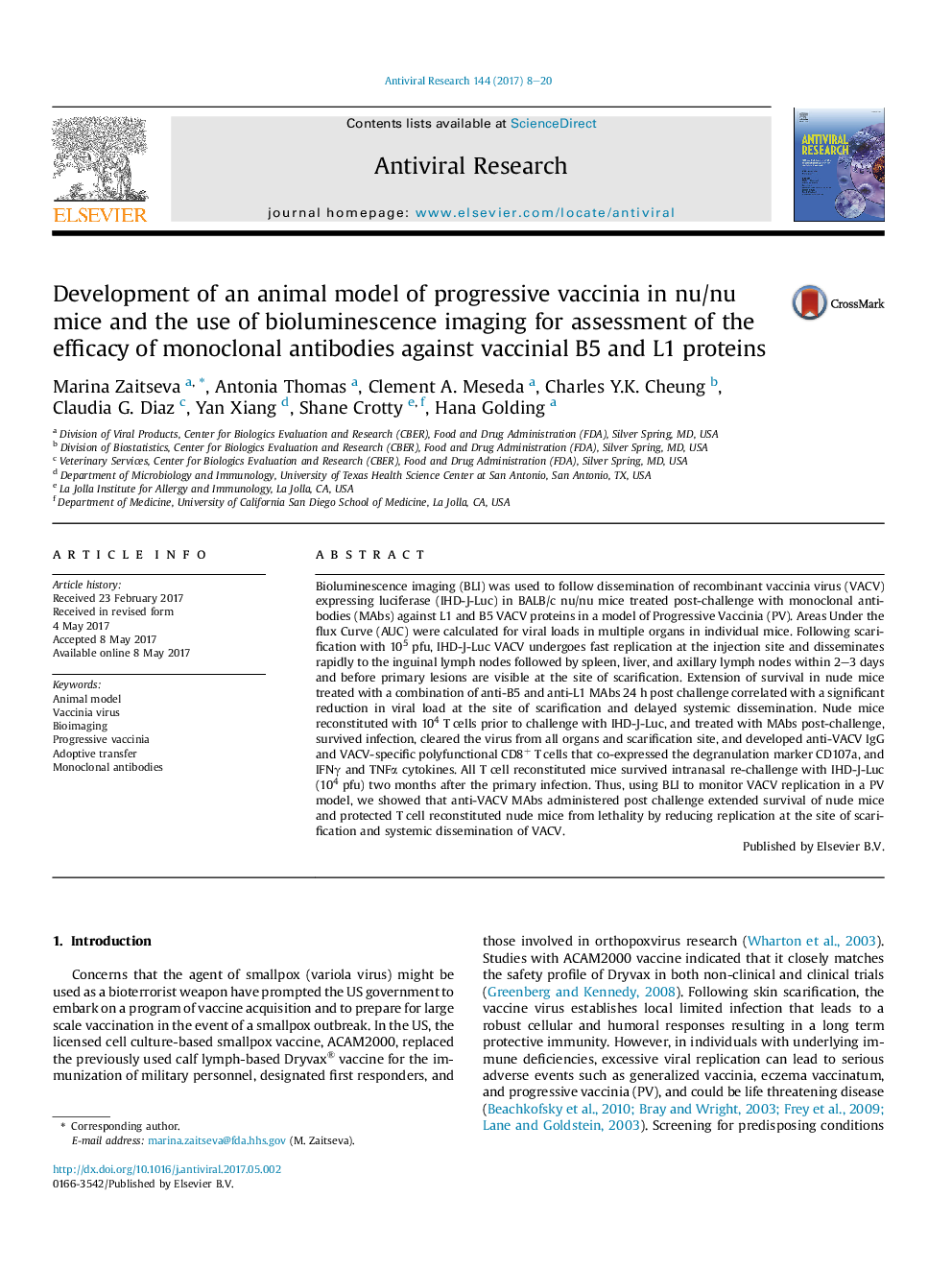| کد مقاله | کد نشریه | سال انتشار | مقاله انگلیسی | نسخه تمام متن |
|---|---|---|---|---|
| 5551696 | 1557799 | 2017 | 13 صفحه PDF | دانلود رایگان |

- Animal model of Progressive Vaccinia (PV) was developed in nu/nu mice infected with IHD-J-Luc vaccinia virus (VACV).
- Viral loads in organs were quantified using bioluminescence imaging (BLI) of live mice.
- VACV replicates at the site of scarification and disseminates via inguinal lymph nodes within 2-3 days post infection.
- Post-challenge treatment with anti-B5 and anti-L1 MAbs extended survival and reduced local and systemic dissemination.
- Infected nu/nu mice reconstituted with T cells developed anti-VACV IgG and VACV-specific polyfunctional CD8+ T cells.
Bioluminescence imaging (BLI) was used to follow dissemination of recombinant vaccinia virus (VACV) expressing luciferase (IHD-J-Luc) in BALB/c nu/nu mice treated post-challenge with monoclonal antibodies (MAbs) against L1 and B5 VACV proteins in a model of Progressive Vaccinia (PV). Areas Under the flux Curve (AUC) were calculated for viral loads in multiple organs in individual mice. Following scarification with 105 pfu, IHD-J-Luc VACV undergoes fast replication at the injection site and disseminates rapidly to the inguinal lymph nodes followed by spleen, liver, and axillary lymph nodes within 2-3 days and before primary lesions are visible at the site of scarification. Extension of survival in nude mice treated with a combination of anti-B5 and anti-L1 MAbs 24 h post challenge correlated with a significant reduction in viral load at the site of scarification and delayed systemic dissemination. Nude mice reconstituted with 104 T cells prior to challenge with IHD-J-Luc, and treated with MAbs post-challenge, survived infection, cleared the virus from all organs and scarification site, and developed anti-VACV IgG and VACV-specific polyfunctional CD8+ T cells that co-expressed the degranulation marker CD107a, and IFNγ and TNFα cytokines. All T cell reconstituted mice survived intranasal re-challenge with IHD-J-Luc (104 pfu) two months after the primary infection. Thus, using BLI to monitor VACV replication in a PV model, we showed that anti-VACV MAbs administered post challenge extended survival of nude mice and protected T cell reconstituted nude mice from lethality by reducing replication at the site of scarification and systemic dissemination of VACV.
Journal: Antiviral Research - Volume 144, August 2017, Pages 8-20